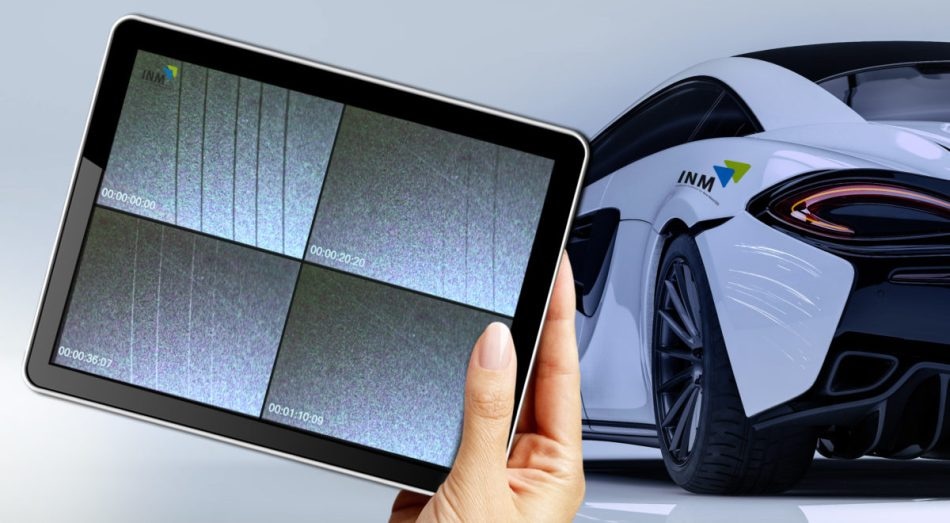Mar 21 2019
A new coating developed from corn starch is capable of repairing small scratches by itself via heat because of the special arrangement of its molecules. The material is made mobile due to the cross-linking through ring-shaped molecules, and this allows it to compensate for the scratches and these disappear again.
 Transparent self-healing Nanomer®-coating as protective paint for high-gloss surfaces: Superficial micro-scratches are healing completely within a few minutes under the influence of heat. (Image credit: Uwe Bellhäuser)
Transparent self-healing Nanomer®-coating as protective paint for high-gloss surfaces: Superficial micro-scratches are healing completely within a few minutes under the influence of heat. (Image credit: Uwe Bellhäuser)
Despite being harmless, superficial micro-scratches present on the car body or on other high-gloss surfaces are disturbing. Particularly in the luxury segment, such surfaces are categorized by their flawlessness and they lose their value because of micro-scratches.
A solution is now provided by a new paint developed by Saarbrücken researchers. Maize starch-based coating is available with a special arrangement of its molecules, and this feature allows it to repair tiny scratches by itself via moderate heat treatment. The material is flexible because of the cross-linking through ring-shaped molecules, and this allows it to compensate for the scratches, which disappear again. INM experts developed the new coating in collaboration with scientists from Saarland University.
At this year’s Hannover Messe from April 1st to 5th at Stand C54 in Hall 5, the developers will be presenting the coating accompanied by a live demonstration.
Cyclodextrins, ring-shaped derivatives of corn starch, were used by the scientists for the network structure of the lacquers. These cyclodextrins were threaded just like pearls onto long-chain polymer molecules. In the polyrotaxanes produced in this manner, the cyclodextrins on the polymer thread will be able to move more or less freely on specific sections on the linear polymer, and bulky stopper molecules prevent them from unthreading. With the help of a chemical reaction, the pearl chains are cross-linked.
The resulting network is flexible and elastic like a stocking.
Carsten Becker-Willinger, Head, Nanomers Program Division, INM
The cyclodextrin rings, when exposed to heat, migrate back alongside the plastic threads and into the region of the surface scratch, thus compensating for the gap produced by the scratch.
In order to obtain a functional coating with greater mechanical stability and weather resistance, the INM researchers altered the composition of the polyrotaxanes by adding extra ingredients such as inorganic nanoparticles and heteropolysiloxanes. Simultaneously, they succeeded in reducing the original repair time from several hours to only a few minutes.
As part of numerous application tests for different mixing ratios in combination with artificial weathering tests, we investigated pre-painted surfaces on which we applied the new coating as a topcoat.
Carsten Becker-Willinger, Head, Nanomers Program Division, INM.
Now, it is possible to eliminate micro-scratches within just 1 minute at 100 °C. During their series of tests, the researchers took into consideration the standard ISO guidelines of the paint industry.
An industrial application is only conceivable if we fulfil these standard guidelines.
Carsten Becker-Willinger, Head, Nanomers Program Division, INM.
Becker-Willinger thus summarizes the present state of research.
The researchers are presently striving to transfer the making of the coating from the laboratory scale to the pilot plant scale. This will indeed provide the basis for large-scale production. For the succeeding step in transforming development into applications, the INM is open to collaborating with willing companies.
Background
The coating has been financially supported by the Federal Ministry of Education and Research (BMBF) with a sum of 1.1 million euros as part of the research project “Selbstheilende Fahrzeuglacke auf Basis von Cyclodextrin-Polyrotaxanen” (FKz. 03VP01052) as part of the VIP+ funding initiative since 2016. The goal of the funding measure “VIP+ – Validierung des technologischen und gesellschaftlichen Innovationspotenzials” is to close the gap existing between early results from elementary research and a possible application. VIP+ will financially support research and development work in projects of up to three years with up to 1.5 million euros. Additional information can be obtained online.